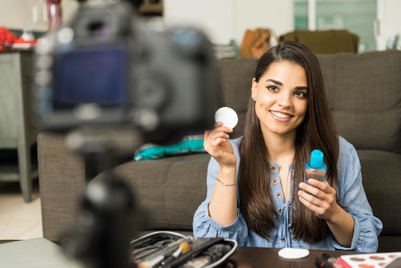
The first voice you hear on Bjork’s latest album – Biophilia – isn’t the voice of the pint-sized Icelander, but rather that of David Attenborough, who describes and explains the concept of the album as you sweep through a 3D rendering of the album’s cosmos.
This is Biophilia’s ‘mother app’; a mobile and tablet application that houses not just the Biophilia album, but builds a startling experience around it. It’s beautiful, and far from getting in the way of the music, augments it by creating a richer and more immersive experience around it.
Bjork isn’t alone. Stephen Fry’s book The Fry Chronicles exists as an application called MyFry. As Fry himself points out “Instead of reading my book in a boring old beginning to end fashion, we thought you might like to read it backwards, or upside down, or from the inside out – and back again.” Like Bjork, Fry is using digital technology to build an experience around his content – an experience that becomes personalised when placed in the hands of the consumer.
Like Bjork and Fry, a host of artists are finding ways to put us in the driving seat. JK Rowling has created Pottermore, which – as well as being an online sales portal – will enable anyone to create and contribute to the Potter Universe. And Arcade Fire have invited us to create our own music video with the Google Chrome experiment Wilderness Downunder.
Brands are also capitalising on the opportunity. Tipp-Ex invited us to decide whether or not to shoot a bear in a YouTube video – a decision that was followed by an invitation to ask a bear to do pretty much anything we could think of. Thanks to the innovative YouTube packaging, the bear largely obliged.
Commonwealth Bank has a wealth of content around property investment, but rather than passively deploying it they have built Investorvillle. The ‘property investment simulator’ allows you to use actual realtime property data to learn the basics of investing in property within the context and experience of an online game.
What all of these examples have in common is a radically user-centric perspective; content hasn’t been developed in isolation but rather within the context of how the creator wants it to be experienced. This is the opportunity of digital platforms: an opportunity to bend the platform to adapt and augment the content.
Bjork, Fry, Rowling and Co.’s efforts also pick up on two key themes of current digital thinking. Customisation and personalisation come as standard now – from designing unique trainers to Google+’s crafty ability to personalise search results based on what your social graph has interacted with. There is increasingly no such thing as a one-size-fits-all solution – why should content be any different?
The second theme that content-experiences capitalise on is gamification – Pottermore will challenge you to pit your creativity with the world, Investorville can compare your simulated investment performance in the context of an actual game. Whether you’re competing with yourself (how will I read MyFry today?) or your social network, building experiences around your content gives it instant socialisation; your content is inherently more sharable than the content alone would otherwise be.
More than anything though, packaging up content in ways that augment and amplify that content gives artists and brands alike a better chance at capturing some of the scarcest commodity on the planet – human attention. If there is one direction of travel for digital, if not all, media it is one of a journey from scarcity to ubiquity…
The limited platforms of even a decade ago have given way to the limitless of platforms today. There exists, to all intents and purposes, an infinite amount of content. Artists, brands, governments, charities and media owners no longer have our attention by default… our attention is fragmented across tweets and updates and downloads and wall posts and videos and even the occasional advertisement. As 2016 – PHD’s latest publication observes – we’re all media owners now … the internet is populated not by 1.2 billion consumers, but by 1.2 billion content creators. The quantity of content that exists is about to go off of the scale.
Bjork and Fry aren’t investing in innovative packaging for their content for its own sake – they’re investing in human attention. They’re investing in innovations that will encourage us to stay with their content for longer and visit more often – and encourage others to do likewise.
The opportunity for brands is the same – innovating in digital media platforms to augment, amplify and socialise content. Asking yourself what content you are creating is no longer enough. Media has never more been part of the message.



.jpg&h=334&w=500&q=100&v=20250320&c=1)

.jpg&h=334&w=500&q=100&v=20250320&c=1)
.jpg&h=334&w=500&q=100&v=20250320&c=1)


.png&h=334&w=500&q=100&v=20250320&c=1)

.png&h=334&w=500&q=100&v=20250320&c=1)



.png&h=268&w=401&q=100&v=20250320&c=1)


.png&h=268&w=401&q=100&v=20250320&c=1)